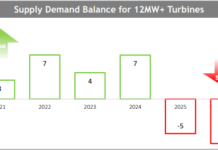By Tim Conneally
The pool of public solar yieldcos keeps growing.
Just before the Christmas holiday, Sol-Wind Renewable Power LP filed for a $100 million initial public offering with the Securities and Exchange Commission. This will be the eighth Yieldco to debut since 2013, and the stock will trade on the NYSE under the symbol SLWD.
But there’s something different about this one.
Sol-Wind is a yieldco that utilizes a Master Limited Partnership (MLP) structure, so it will be taxed differently from the other Yieldcos.
Generally speaking, a Yieldco is similar to MLPs by nature, but the taxation rules are very different.
The offering from Sol-Wind merits a closer look.
What it is, Why it’s different
Sol-Wind is a New York-based company that has only existed for a year. It has already booked $15 million in PPAs across the U.S., Puerto Rico, and Canada. It has a portfolio of 184.6 MW of generating capacity which is made up of 131 discrete solar assets and 16 wind assets.
According to the IPO prospectus, Sol-Wind intends to put the proceeds of the IPO toward acquiring more assets. The document states:
“We are focused on acquiring assets from middle-market developers, which is an area where we see particularly compelling opportunities. We define “middle-market developers” as those developers who typically, in the case of solar assets, develop projects of between 100 kW and 5 MW in nameplate capacity and, in the case of wind assets, between 1 MW and 10 MW in nameplate capacity.”
It seems pretty straightforward, but Sol-Wind is attempting to structure itself in such a way so that it can receive the tax benefit of an MLP instead of a typical yieldco.
A regulation known as I.R.C. § 7704 allows certain publicly-traded master limited partnerships to be taxed as partnerships instead of corporations, and Sol-Wind has the ability to meet that exemption.
It’s a tricky arrangement that’s often used by private equity and hedge funds to avoid taxation. A blocker corporation is set up to absorb the 35% corporate tax that would otherwise be applied to the partnership’s assets. However, the corporation makes nothing, and any income made by the MLP is taxed only at shareholder level.
Why is this structure necessary?
“By statute, MLPs have only been available to investors in energy portfolios for oil, natural gas, coal extraction, and pipeline projects. These projects get access to capital at a lower cost and are more liquid than traditional financing approaches to energy projects, making them highly effective at attracting private investment,” Senator Chris Coons (D-DE) says on his website. “Investors in renewable energy projects, however, have been explicitly prevented from forming MLPs, starving a growing portion of America’s domestic energy sector of the capital it needs to build and grow.”
Currently under federal law, qualified sources of income for tax-free partnerships include: interest, dividends, rents, capital asset sales, real estate, and natural resources (including oil/gas/petroleum, coal, timber, etc).
Several bills known as the MLP Parity Act (MLPPA) were submitted to congress in 2012 and 2013, seeking to amend the tax code for publicly traded partnerships to treat all income from renewable and alternative fuels as “qualifying income”.
Unfortunately, senate bills and house resolutions known as the MLP Parity act all died in committee.
Tim Conneally is an analyst at Energy and Capital, where this article was first published.







